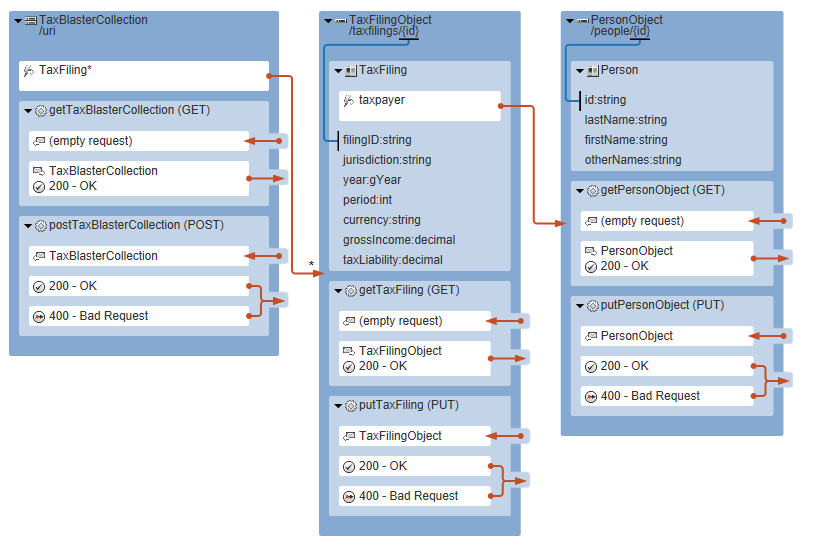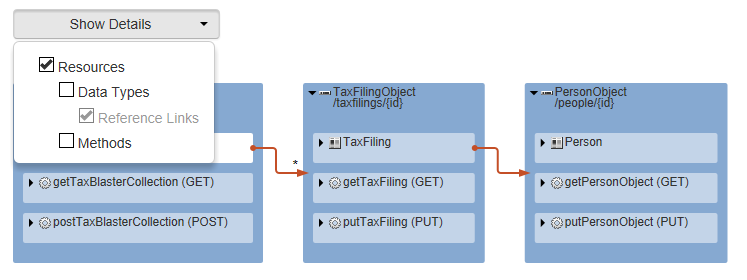|
<< Click to Display Table of Contents >> Inspecting the Model |
  
|
|
<< Click to Display Table of Contents >> Inspecting the Model |
  
|
We have now defined a basic RESTful API, with two completed resource definitions, each bound to a data structure:
| • | The TaxFilingObject resource is bound to a single data structure of type TaxFiling. |
| • | The PersonObject resource is bound to a single data structure of type Person. |
We can also see the TaxBlasterCollection resource that we will complete later.
Looking at the diagram for this project (double-click the Diagram View tab to toggle between full-screen and normal size views), we can see that the reference property taxpayer defined in TaxFiling, which refers to a data structure of type Person, was translated into a red hyperlink arrow from the TaxFilingObject to the PersonObject (ignoring TaxBlasterCollection for now). This is the default treatment for reference links, as long as there is a single resource (or a designated default resource) defined for the target data type. We can also see template parameter bindings, rendered as blue lines mapping {id} template parameters to their associated data type properties:

|
Hint: Expanding a view To view the diagram in a large window double click the tab. To return to the previous state double-click the tab again. You can do this with any of the view tabs. |
The diagram has collapsible compartments for resources, data types, reference links and methods.
| • | You can expand and collapse these individually by clicking on the expander triangles in the diagram. |
| • | You can also use the Show Details drop-down menu to expand or collapse each compartment type globally, over the entire diagram.  |
| Copyright © 2016 ModelSolv, Inc. All rights reserved. RepreZen and RAPID-ML are trademarks of ModelSolv, Inc. Swagger is a registered trademark of SmartBear Software, Inc. RepreZen API Studio is not associated with nor endorsed by SmartBear Software, Inc. |